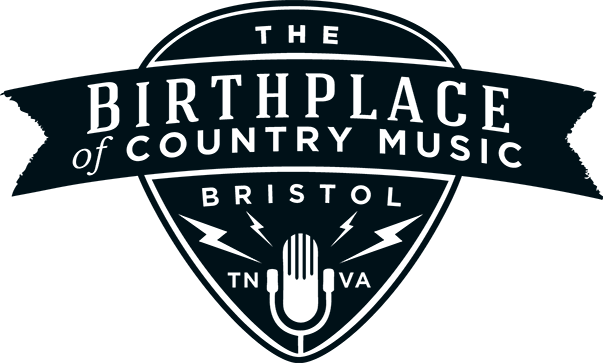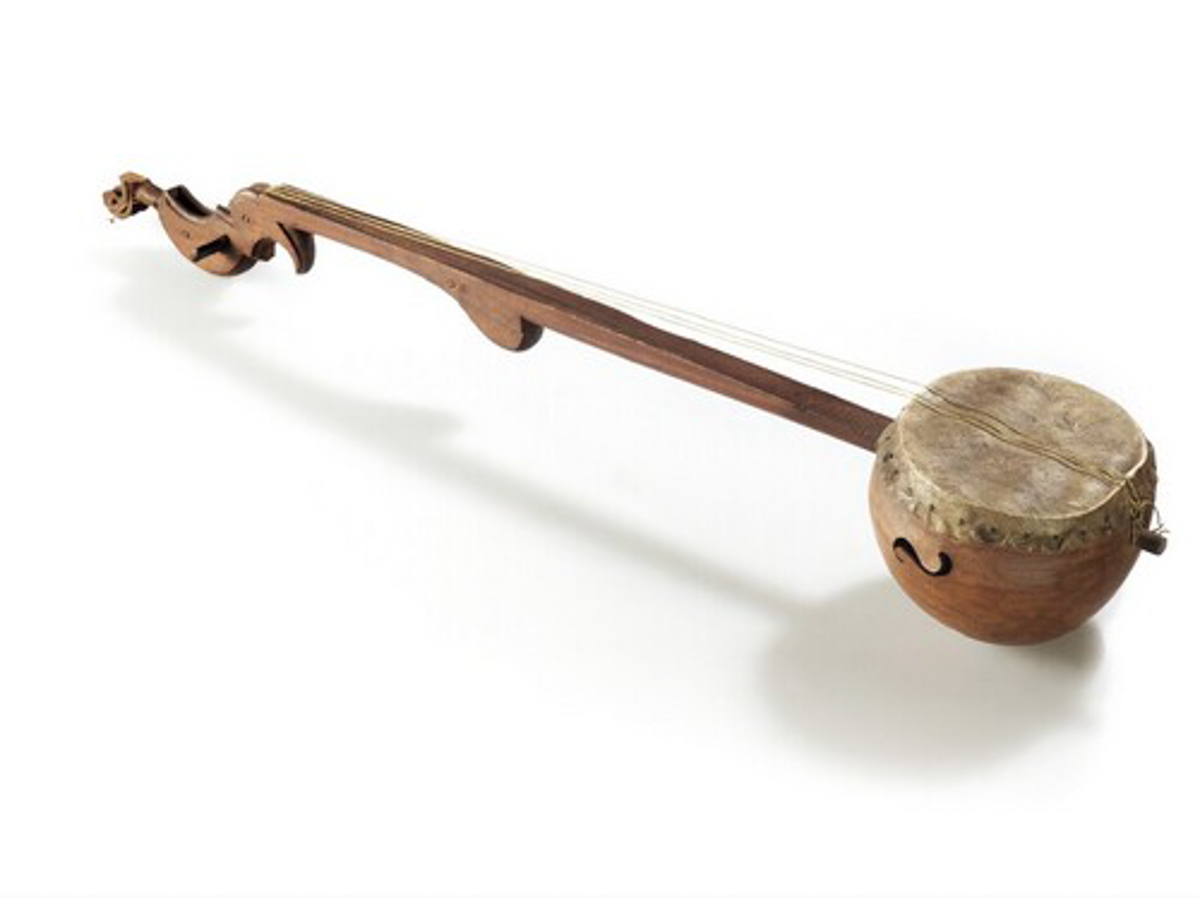“Instrument Interview” posts are a chance to sit down with the instruments of traditional, country, bluegrass, and roots music – from different types of instruments to specific ones related to artists, luthiers, and songwriters – and learn more about them. Ten questions are posed, and the instruments answer! Today we talk with the Creole bania.
What ARE you?
I’m a banjo! I know I don’t exactly look like the banjos you think of today, but I’m actually the earliest known banjo that still exists. I was made sometime before 1777, and at that time, banjos were made of gourds and calabashes.
Since you’re so different from the banjos we know today, describe yourself to us.
My body is a calabash, and my drumhead is made of animal skin held on with wooden pins. I have two S-shaped sound holes (kind of like a fiddle). I also have three long strings and one short string and a very nicely carved peghead. My neck is thinner than banjos today, and it is made of wood.

Where did you come from?
I came from the country that is known as Suriname. Located on the northern coast of South America, Suriname is actually a part of the Caribbean, even though it’s not an island. In the 1770s, Suriname was a Dutch colony, known for the brutal conditions that enslaved Africans and people of African descent faced working on sugar and coffee plantations.
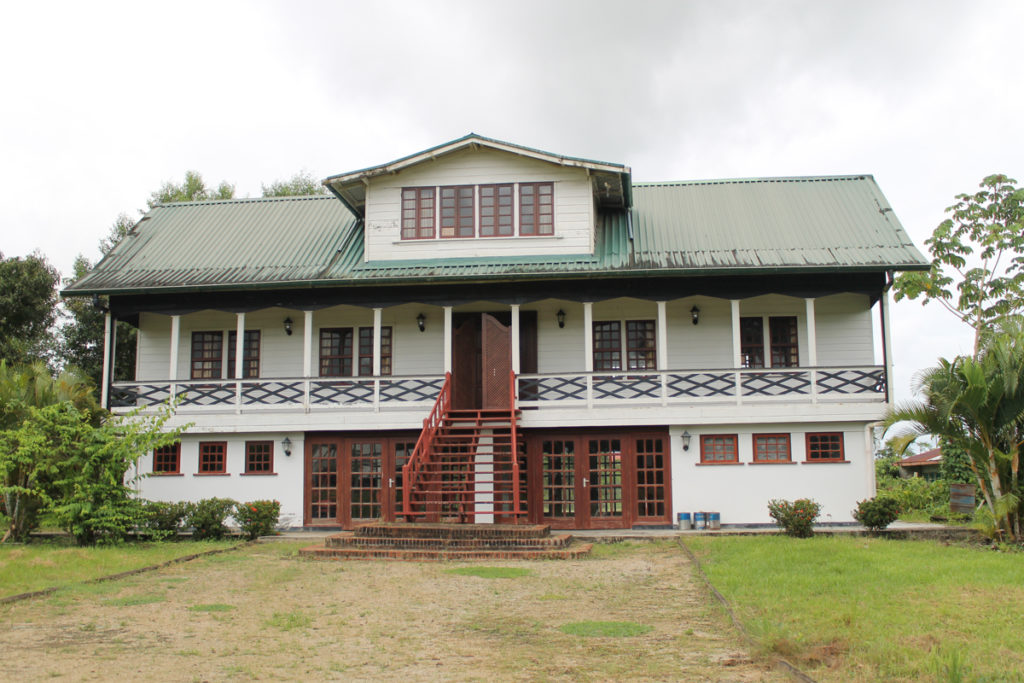
Photograph courtesy of Kristina Gaddy
Wait! I think of banjos as a North American instrument, but you say you’re from South America?
Actually, we’re not just found in North America. Banjos were observed all over the Caribbean, too. In fact, the first record of a banjo is from about 1687 in Jamaica! Instruments similar to me had lots of different names, including bania, banya, banjo, banger, banza, and panja, and were observed in New York, the Carolinas, New Orleans, Cuba, Haiti, St. Vincent, and Barbados, among other places. If you want to know more, you should check out Dena Epstein’s Sinful Tunes and Spirituals. Yours truly is mentioned, but she has accounts of my relatives from all over.
Check out this video of Seth Swingle playing a reproduction of the Haitian banza, a banjo collected in Haiti around 1840. Pete Ross studied the original and now makes reproductions for players and museums.
Who made you?
Almost 300,000 people were forcibly taken from Africa and enslaved in Suriname, and I was made by one of those enslaved people, who based my design on the instruments he or she had in Africa. I wish I could tell you more about the person who made me, but the man who collected me, John Gabriel Stedman, didn’t tell anyone more than that.
Tell me more about this Stedman guy.
Captain John Gabriel Stedman arrived in Suriname to fight formerly enslaved people who had escaped to live in the jungle. Stedman was there to stop two tribes – the Saamaka and Njuka – from attacking plantations. Stedman kept a diary while he was in Suriname, which eventually became a very popular book, and he even drew a picture of me in it! That was when he named me “Creole Bania.”
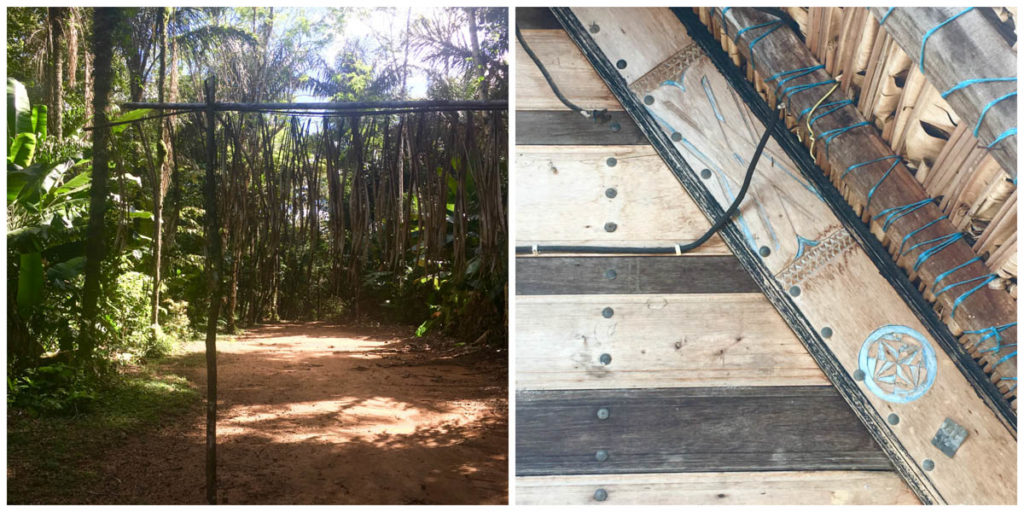
Where are you now?
I live at Tropenmuseum in the Netherlands. For many years I was in the storerooms, but I’ve recently been put on permanent display in an exhibit about slavery in the Dutch colonies, including Suriname.
Ok, so you’re the oldest banjo, but are there any other banjos like you?
Yes! I have a friend from Suriname who lives at the Ethnologisches Museum in Berlin, Germany. That banjo is known as the panja (pronounced pan-ya), and it was collected sometime before 1850. We are very similar in construction, and this panja has a really beautiful peghead.
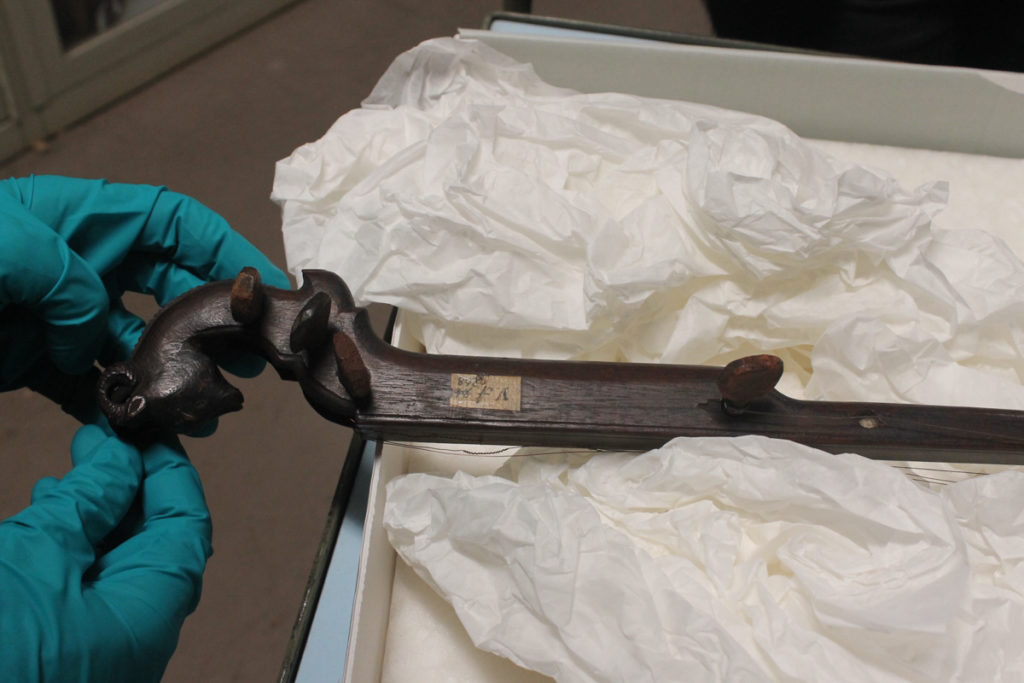
Do we know any more about the panja?
No. In fact, for many years, U.S. banjo scholars didn’t know about the panja at all! It was rediscovered by a banjo researcher named Schlomo Pestcoe, and now a couple of people have even been by to visit it.
What type of music did you and the panja play?
Alas, something else we don’t remember! No one wrote down the music that was played on banjos in Suriname, but a note about the panja does give a bit of a clue. The collection note says: “Panja, 4-stringed strummed instrument, particular to death celebrations and to the song Ananhitori.” Recent research suggests that the banjo was a central part of a spiritual/cultural ritual across the Americas. I hear if you want to find out more about this, you should come to this year’s Banjo Gathering at the Birthplace of Country Music Museum in November!
